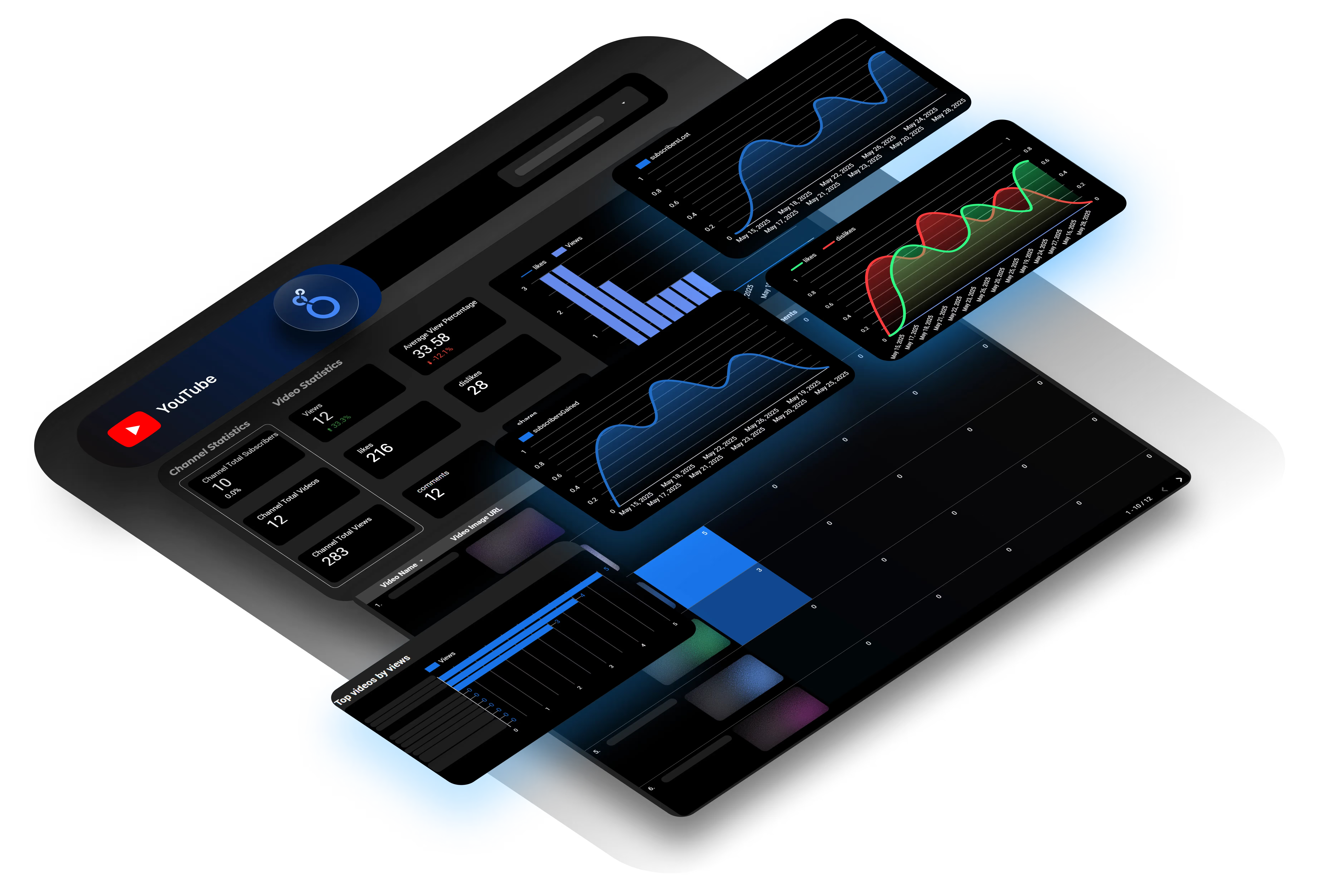Marketing teams, SEO specialists, and digital strategists increasingly depend on data to refine their campaigns and maximize returns. However, one often-overlooked aspect of data analysis is uncovering hidden patterns, those subtle, non-obvious insights that may not be immediately visible but can significantly enhance your marketing performance.
In this article, we’ll explore how to identify these hidden patterns, why they matter, and how you can leverage them to improve your marketing and SEO efforts. By the end, you’ll have practical strategies to strengthen your data analysis, optimize your campaigns, and gain a more precise understanding of your audience and market trends.
What Are Hidden Data Patterns?
Before we dive into methods and techniques, it’s important to define what hidden data patterns actually are.
Hidden Data Patterns: A Quick Overview
Hidden data patterns refer to insights in your datasets that aren’t immediately obvious. They could be subtle relationships between variables, correlations that aren’t visible on the surface, or behavioral trends that emerge only when the data is analyzed deeply.
These patterns may exist in:
- Customer behavior: How different segments engage with your content or products at various times or on specific devices.
- Campaign performance: Trends in conversion rates, click-through rates (CTR), and cost-per-acquisition (CPA) across different channels.
- SEO patterns: Search ranking fluctuations based on time, content types, and even competitor movements.
While these patterns might not be readily apparent, they can reveal crucial insights that drive marketing decisions, enhance user experience, and optimize the overall performance of your campaigns.
Why Identifying Hidden Patterns is Crucial for Campaign Success
Uncovering hidden patterns can significantly transform your marketing and SEO efforts. Here’s why:
1. Enhanced Targeting and Personalization
When you identify hidden patterns, you can personalize your messaging to address the specific needs and behaviors of different customer segments. For example, if you discover that certain demographics engage more with a particular type of content during specific times, you can tailor your campaigns accordingly, maximizing relevance and engagement.
2. Optimized Resource Allocation
Identifying which marketing channels, content types, or keywords are delivering the best return on investment (ROI) allows you to allocate your resources more effectively. You won’t be wasting budget on strategies that aren’t performing well, and you can invest more heavily in tactics that are producing results.
3. Improved Conversion Rates
Hidden patterns may reveal friction points or opportunities in your sales funnel that weren’t apparent before. For example, maybe your visitors bounce off a particular landing page at a specific point in time. Discovering this could prompt adjustments to your funnel, increasing conversion rates.
4. Competitive Edge
In the competitive world of digital marketing and SEO, uncovering non-obvious trends can give you an advantage over your competitors. By spotting patterns they may have missed, you can adapt your strategy and act proactively rather than reactively.
How to Identify Hidden Patterns in Data: Proven Methods
Now that we understand why identifying hidden patterns is so crucial, let’s explore how you can actually uncover these insights. These methods can be applied across various areas, from SEO performance to digital marketing campaigns.
1. Exploratory Data Analysis (EDA)
Exploratory Data Analysis is the first step in any data analysis process. It’s about taking a deep dive into your data to look for patterns and relationships.

Key Steps in EDA:
- Data Cleaning: Remove irrelevant, missing, or outlier data points that could skew results.
- Data Visualization: Use visual tools like scatter plots, bar charts, and heatmaps to identify trends. Tools like Tableau, Power BI, and Looker Studio are great for creating visual insights that reveal hidden patterns.
- Correlation Analysis: Find correlations between different data points. For example, you might discover that a particular keyword consistently correlates with higher traffic in specific months.
Tools for EDA:
- Python libraries (like pandas, matplotlib, and seaborn)
- R and ggplot2
- Business intelligence platforms like Tableau
- Dataslayer: Perfect for marketers looking to integrate and analyze data from various sources with minimal effort.
2. Segmentation and Clustering
Sometimes, the hidden patterns emerge when you segment your audience into different groups based on shared characteristics (like behavior, demographics, or engagement). Clustering techniques, like k-means or hierarchical clustering, can help you identify natural groups within your data.
How to Use Segmentation for Hidden Patterns:
- Group customers by purchasing behavior, content engagement, or even device used.
- Create tailored campaigns for each segment. For example, if you identify that a specific customer group converts well through email campaigns but not social media, you can adjust your approach.
3. Time Series Analysis
Time series analysis is incredibly valuable when it comes to identifying hidden patterns in campaign performance over time. Whether you’re tracking keyword rankings or conversions, time series can help you spot seasonal trends, patterns of recurring behavior, or shifts in performance during specific events.
Applying Time Series for Campaign Insights:
- Identify seasonality in sales or clicks.
- Monitor long-term trends in SEO keyword performance.
- Predict future performance by analyzing historical data trends.
4. Predictive Analytics and Machine Learning Models
Machine learning (ML) offers powerful tools for identifying non-obvious patterns. Predictive models, in particular, help you uncover relationships between different variables that might not be apparent.
Key ML Techniques for Pattern Discovery:
- Regression Models: Predict future outcomes like sales or conversions based on historical data.
- Decision Trees and Random Forests: These can identify the most important factors affecting campaign success.
- Neural Networks: Detect complex, non-linear relationships in large datasets, such as hidden user behavior patterns on a website.
- Marketing Mix Modeling (MMM): A technique that helps measure the effectiveness of various marketing channels and strategies, predicting how changes in factors like advertising spend, promotions, or seasonality will impact overall campaign performance. For those looking to leverage MMM specifically, Morpheus is a powerful tool that integrates seamlessly with platforms like Google Analytics, providing deeper insights into how different marketing activities influence results.
5. A/B Testing and Experimentation
Although A/B testing is more commonly used for optimization, it can also reveal hidden patterns. By testing different versions of an ad or webpage, you may uncover subtle differences in user behavior that inform your next steps.
How to Use A/B Testing:
- Conduct tests on small user segments to understand their preferences.
- Experiment with different messaging or content formats to identify which works best with different demographics.
Turning Hidden Insights Into Actionable Strategies
Once you’ve identified these hidden patterns, the next step is transforming them into actionable strategies that enhance your campaigns.
1. Personalizing Campaigns Based on Hidden Data Insights
If your data shows that a certain group engages more with video content, create more video-focused ads for that segment. Or, if users tend to convert better after visiting a certain page, optimize that page for greater impact.
2. Optimizing SEO Campaigns
Hidden SEO patterns, such as keyword trends or bounce rates, can guide you in refining your content strategy. If you notice that certain keywords perform well on specific devices or at particular times, adjust your content and targeting accordingly.
3. Improving UX/UI for Higher Conversions
Customer behavior patterns, especially those related to engagement on landing pages, can provide insight into UX/UI improvements. If users drop off after scrolling past a certain point, it may indicate a design flaw or content that isn’t resonating with them.

4. Predicting Market Trends
With predictive analytics, you can forecast future market trends, customer preferences, and even identify potential market disruptions before they happen, giving you a competitive advantage in your campaigns.
Conclusion
In digital marketing, hidden data patterns are often the key to unlocking significant improvements in campaign performance. By using methods like exploratory data analysis, segmentation, time series analysis, and machine learning, you can uncover insights that directly influence your decision-making process.
For content strategists, SEO professionals, and digital marketers, mastering the art of identifying these non-obvious patterns is not just a nice-to-have; it’s a necessity for staying ahead of the curve. The next time you look at your data, remember: the real value lies beneath the surface, waiting to be discovered.







